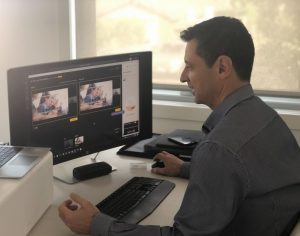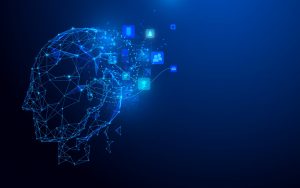Information Communications Technologies – A.I. see dead people…

 It has been 20 years since the release of the Stephen Spielberg movie “A.I – Artificial Intelligence”. My son was turning three and none of the students here at School were even born yet. The movie starred a young Haley Joel Osment, better known as the creepy kid in the Sixth Sense who could see dead people. He played David, an experimental robot in A.I programmed to love, develop human thoughts and have feelings. Personally, the only thing I loved about this film was when it finished!
It has been 20 years since the release of the Stephen Spielberg movie “A.I – Artificial Intelligence”. My son was turning three and none of the students here at School were even born yet. The movie starred a young Haley Joel Osment, better known as the creepy kid in the Sixth Sense who could see dead people. He played David, an experimental robot in A.I programmed to love, develop human thoughts and have feelings. Personally, the only thing I loved about this film was when it finished!
However, it made me reflect that we were talking about this type of technology well over 20 years ago. So why does A.I have a dark and mistrusting stigma associated to it by many people today – even some I work with here at St Catherine’s? Are robots going to take over the world?
It certainly doesn’t help that the A.I robots in the movie killed humans. That was unfortunate. Sadly, in the name of entertainment, movies tend to blur the facts and ignore the reality. I mean, isn’t Jaws still responsible for the hunting and deaths of millions of sharks a year? While human loss caused by sharks remains less than 10 on average per year*. But I digress.
Let’s explore and hopefully demystify the A.I myths. If you punched in the term “artificial intelligence” on Google and ended up reading about it on another website, or you ordered dinner recently using Uber Eats, you made use of A.I. There are plenty of examples of A.I that we use as every part of our daily lives that save time, money and effort.
Without a doubt the most common use of A.I is the technology behind Google Maps and many Travel Apps. When was the last time you picked up a Melways? Do you even know what one is? If so, did it tell you the fastest route to reach your destination? Or where the traffic was backed up? Or which roads had tolls? Very few people would argue that this technology has not improved our way of life. You would have to say it is virtually impossible to get lost in the 21st century if you have a phone.
 My personal favourite A.I technology is face detection and recognition. Intelligent systems store and use biometric data to identify a person based on their facial features. With this data the system learns who you are. I can only imagine how much data is needed to store a nose the size of mine!
My personal favourite A.I technology is face detection and recognition. Intelligent systems store and use biometric data to identify a person based on their facial features. With this data the system learns who you are. I can only imagine how much data is needed to store a nose the size of mine!
Facial recognition is widely used today. Almost all phones recognise your facial features to identify you. You can securely unlock your phone and access your banking App using facial recognition. Facebook and other social media sites use this technology to identify people in photos so they can be tagged. Here at St Catherine’s we trialled a facial recognition sign-in terminal and student attendance system. Maximising teaching time and letting technology take care of the admin has benefits for everyone. A.I makes life easier, provides better security and allows you to be more efficient. Especially if it doesn’t try to kill you.
As I write this blog my Word application is automatically correcting my spelling and grammar. Even making suggestions. The algorithms built into the program learns my style of writing and adjusts accordingly. I can even immediately replace a word with the online thesaurus (giving the impression I’m a better writer). Readers can also check to see if I have plagiarised someone else’s work (go on, I dare you). We use this tool every time a student submits work on the Portal. If you are a YouTube publisher your videos are checked for copyright protecting the intellectual property of individuals.
The systems available today are multifaceted, storing and analysing incompressible amounts of data requiring complex programming and algorisms for demanding outcomes. This is what Artificial Intelligence is. Not some robot with desires to be a ‘real boy’.
There are plenty of articles online about the risks of A.I. One of the main concerns is that A.I technologies is replacing more and more jobs – particularly in the automation space. This is not a new phenomenon. The Industrial Age back in late 1700s is accountable for many manual hand tool jobs being replaced by power-driven machines. This resulted in a shift of the worker’s skill sets to find work using the newer technologies. The evidence today suggests that there is an equilibrium of new jobs being created because of technology advancements as there is jobs being replaced. However, it is certainly a concern for the ageing workforce and the challenge to learn new skills.
Returning to our robot that can see dead people (I mean the one being programmed to love and develop feelings just like a real human) the reality is that for most of us A.I. improves our everyday lives.
Are robots really taking over the world and is A.I something we should be scared of or should be embracing? All I know is, I’m lucky I wasn’t born a shark!
Reference: * https://blogs.unimelb.edu.au/sciencecommunication/2017/10/22/how-jaws-killed-sharks/


